Webdesk AI News | Webdesk AI Glossary

The news for May 15, 2024 highlights the rapid progress being made in AI across various domains. These advancements promise to transform industries ranging from robotics and imaging to medical diagnostics.
Researchers at Delft University of Technology have achieved a breakthrough in autonomous drone technology. They successfully developed a drone that uses neuromorphic vision and control, mimicking the workings of animal brains. This approach provides significant advantages, as it consumes less data and energy compared to traditional deep neural networks. The drone utilizes a spiking neural network running on Intel’s Loihi neuromorphic research chip, resulting in faster processing and reduced energy consumption. This technology holds immense potential for developing small, agile, and intelligent drones for various applications.
A team of researchers from Southeast University in China have made significant advancements in metalens camera technology. Metalenses are ultra-thin optical devices that can potentially replace traditional lenses, enabling the development of compact and lightweight cameras. However, achieving high image quality with these cameras has been a challenge. The researchers utilized deep learning techniques, specifically a multi-scale convolutional neural network, to enhance the resolution, contrast, and distortion in images captured by a metalens-integrated camera. This breakthrough paves the way for the integration of metalens cameras into various devices, including smartphones and drones.
In the field of medical diagnostics, researchers have explored the potential of combining artificial intelligence algorithms with optical imaging technology for intraoperative cancer diagnosis. A study published in Science Bulletin introduced a diagnostic workflow using D-FFOCT (dynamic full-field optical coherence tomography), a high-resolution optical imaging technique, along with deep learning algorithms to classify tumors. The researchers demonstrated that their approach could achieve rapid and accurate diagnoses, significantly reducing the time required for intraoperative assessment. This advancement holds promise for improving surgical decision-making and enhancing patient outcomes.
Lastly, researchers from Uppsala University and Karolinska Institutet have developed a neuromimetic tactile system that enables robots and prosthetic hands to have a sense of touch comparable to that of humans. Inspired by the human nervous system, the system employs electrical pulses to process dynamic tactile information, allowing it to identify objects with remarkable speed and accuracy. This technology has the potential to revolutionize the interaction between humans and robots, making it more natural and safer, and holds promise for developing prosthetic hands that feel like an extension of the user's body.
Researchers at the University of Helsinki, alongside international collaborators, are pioneering the use of Artificial Intelligence (AI) and sensor technologies to revolutionize marine data collection. Professor Petteri Nurmi’s team aims to improve the efficiency and scope of data collection in marine environments, a task made challenging by water's poor signal transmission and the lack of pre-existing infrastructure. Through projects such as AI-assisted whale-watching in Madeira, which aids in the real-time identification of marine animals, and the development of an AI model for classifying underwater plastic debris with 85% accuracy, the team is pushing the boundaries of environmental research. These advancements not only facilitate the gathering and analysis of marine data but also hold promise for better understanding and protecting ocean ecosystems. By equipping divers and underwater robots with AI-driven tools, researchers hope to achieve a more comprehensive overview of marine plastic pollution and biodiversity, potentially leading to more effective conservation strategies and regulations.
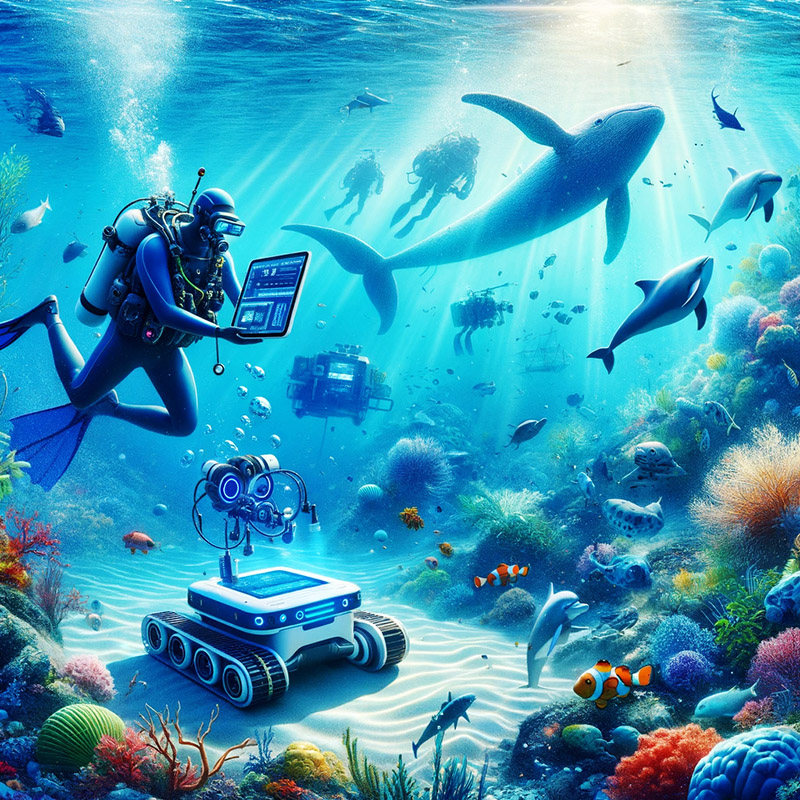
At Texas A&M AgriLife Research, a groundbreaking project led by Luis Tedeschi, Ph.D., is set to transform livestock management through the application of artificial intelligence (AI) and advanced technology. Funded by a U.S. Department of Agriculture grant, the project aims to introduce precision livestock farming techniques to enhance the efficiency and sustainability of beef cattle production. By employing sensors, cameras, and AI to monitor feeding behaviors and animal health, the initiative promises to provide producers with actionable insights directly to their smartphones or computers. This noninvasive, cost-effective approach could significantly improve management decisions, ultimately leading to a more sustainable industry. Tedeschi’s research focuses on creating a precision livestock farming facility at Texas A&M, aiming to make AI an invaluable tool for producers, promoting sustainable production, and encouraging the adoption of innovative practices. This endeavor underscores the potential of technology to not only advance agricultural efficiency but also to contribute to environmental and economic sustainability.
At the University of Houston, Assistant Professor Xingpeng Li is pioneering a project aimed at integrating renewable energy sources into the power grid more efficiently, funded by a National Science Foundation CAREER Award. Recognizing the challenges that the low inertia of renewable energy sources like wind and solar power pose to grid stability, Li’s project, titled “Frequency-Constrained Energy Scheduling for Renewable-Dominated Low-Inertia Power Systems,” seeks to ensure the continuous operation and reliability of power systems amidst increasing renewable energy adoption. Utilizing machine learning, his team aims to develop simplified dynamic performance models for better scheduling of energy resources, thus ensuring grid stability while maximizing the use of clean energy. Li is also focused on educating the next generation, developing a new course on applied machine learning in power systems and providing open-source tools to demystify power engineering for students. His extensive research contributions include over 60 peer-reviewed papers and multiple awards, demonstrating a commitment to advancing renewable energy and grid integration.
The Biswas Family Foundation, in collaboration with the Milken Institute, has awarded a $5 million grant to the Gladstone Institutes for the establishment of the Biswas Center for Transformative Computational Cancer Biology. Led by Senior Investigator Katie Pollard, PhD, the center aims to revolutionize cancer diagnosis and treatment by integrating advanced machine learning techniques with experimental technologies. This interdisciplinary approach will enable the generation and prioritization of research hypotheses, particularly focusing on colorectal and skin cancers, while aiming to unveil molecular mechanisms that have previously been overlooked. The center is committed to sharing its findings openly, contributing to a global advancement in cancer research. This initiative stands out not only for its innovative approach to understanding cancer but also for its emphasis on diversity, including rare cancer pathways and non-European genetic ancestries. The grant is part of a larger $14 million initiative aimed at leveraging computational biology and artificial intelligence to fuel breakthroughs in cancer research across several leading institutions.
MIT researchers improve peripheral vision in AI models: MIT researchers developed an image dataset that simulates peripheral vision in machine learning models. Training models with this dataset improved their ability to detect objects in the visual periphery, although the models still performed worse than humans. The findings could help build AI models that see the world more like humans, potentially improving driver safety and predicting human behavior.
Combining data and rules makes AI more efficient and scientifically sound: Researchers from Peking University and the Eastern Institute of Technology, Ningbo, developed a framework to assess the relative value of rules and data in "informed machine learning models." By incorporating rules like the laws of physics into AI training, they showed that AI could better solve complex mathematical problems and optimize experimental conditions in chemistry. The framework helps balance the influence of data and knowledge to enhance the predictive capability of deep learning models.
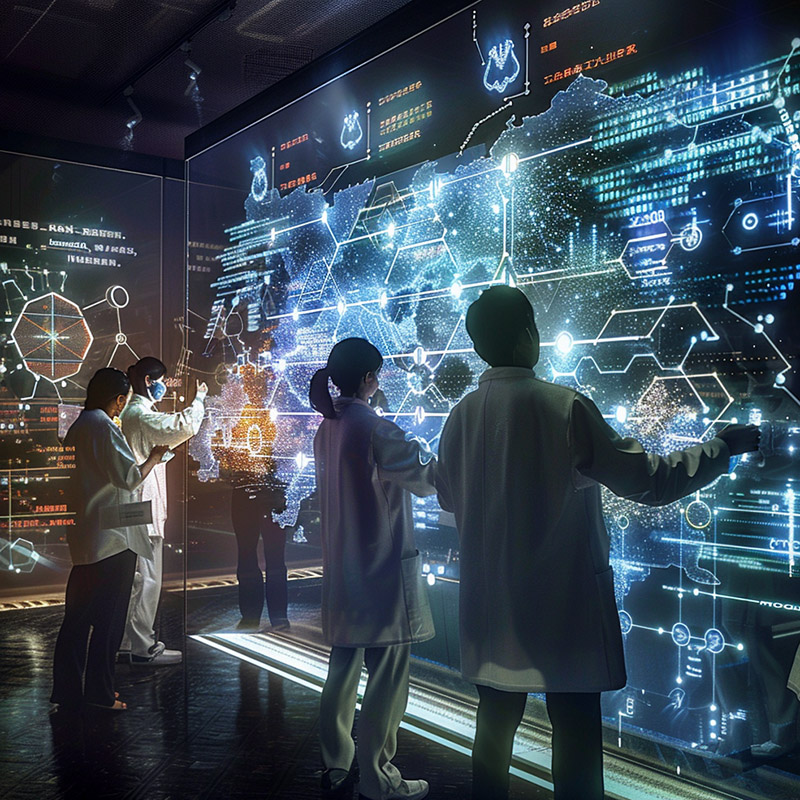
UT Dallas team develops method to protect quantum computers from attacks: A team of researchers from the University of Texas at Dallas and Intel Corp. developed an approach called Quantum Noise Injection for Adversarial Defense (QNAD) to protect quantum computers from adversarial attacks. The method leverages intrinsic quantum noise and crosstalk to counteract attacks designed to disrupt AI's decision-making abilities. In demonstrations, an AI application was 268% more accurate with QNAD during an attack.
AI reveals unhealthy food environment in deprived UK areas: Scientists at the University of Cambridge used AI to predict the healthiness of menus at nearly 180,000 food outlets across Britain. They found that restaurants had the healthiest menus, followed by cafes, pubs, and fast food outlets. The study also revealed that more deprived areas had a higher concentration of food outlets, and these outlets tended to have less healthy menus, creating a "double burden" for people living in these neighborhoods.
Scoping review reveals concerns about AI dermatology apps: A scoping review found that current AI dermatology mobile apps lack evidence, clinician input, and transparency, potentially posing risks to users. The apps may cause harm due to biases, inconsistent validation, and misleading communication. Addressing these challenges through regulation, validation, and standardized evaluation is crucial to harness the benefits of these apps while minimizing risks.
AI detects severe cases of blindness-causing condition in preemies with 100% accuracy: An AI technology called i-ROP Deep Learning can accurately and independently detect all severe cases of retinopathy of prematurity (ROP), a condition that causes blindness in prematurely born babies. The technology has the potential to expand global screening and treatment for ROP, particularly in low- and middle-income countries with fewer ophthalmologists.
Imageomics combines machine learning and computer vision to advance biological research: The emerging field of imageomics aims to transform the understanding of the biological and ecological world by combining images of living organisms with machine learning and computer vision techniques. Researchers are developing foundation models and algorithms capable of identifying and discovering traits to improve image classification and analysis, potentially accelerating scientific discoveries across various disciplines.
New machine learning model simulates diverse chemical reactions efficiently: Researchers from Carnegie Mellon University and Los Alamos National Laboratory have developed a machine learning model called ANI-1xnr that can simulate reactive processes in a wide range of organic materials and conditions. The model requires significantly less computing power and time than traditional quantum mechanics models and has potential applications in fields such as drug discovery.
AI-powered autonomous control improves spacecraft docking safety: Researchers at Stanford University have developed an AI-based trajectory optimization framework called the Autonomous Rendezvous Transformer (ART) to improve the safety and efficiency of spacecraft docking. ART integrates AI-based methods into traditional trajectory optimization algorithms, generating high-quality trajectory candidates and enabling faster, more fuel-efficient, and safer autonomous space travel.
AI model evaluates accuracy of online health news: Researchers at the University of New Hampshire developed a machine learning model to help identify online health news stories with inflated claims, inaccuracies, and potential risks. The model outperformed laypeople in assessing the quality of health stories based on expert-developed criteria.
AI accelerates design of diabetes prevention software: Researchers at NYU Langone Health found that artificial intelligence, specifically ChatGPT, can accelerate the design of diabetes prevention software. The AI-enabled interchanges between doctors and software engineers produced a version of the diabetes tool in 40 hours, compared to over 200 hours without AI.
AI chip moves beyond transistors for huge computational gains: Researchers at Princeton University have developed a new AI chip that reimagines the physics of computing, offering significant improvements in speed, compactness, and power efficiency. The chip, backed by DARPA, could enable the deployment of AI in more dynamic environments beyond data centers.
UNIST researchers shine at AAAI 2024 conference: Four research papers from UNIST's Artificial Intelligence Graduate School were accepted for presentation at the prestigious AAAI 2024 conference. The papers cover topics such as computer vision, AI for gaming and virtual reality, multi-agent reinforcement learning, and online recommendation algorithms.
Advanced AI noise suppression improves search and rescue drones: Researchers at Shibaura Institute of Technology developed an AI-based noise suppression system for improved victim detection by search and rescue drones. The system uses Generative Adversarial Networks (GANs) to accurately learn and remove UAV propeller noise, enhancing the audibility of human sounds.
Estonian meat factory to test AI in production with university partnership: Nõo Meat Factory, in collaboration with the University of Tartu, will test novel AI and robotics solutions to optimize production and improve product quality control. The project aims to demonstrate the availability and potential of AI technology in the food industry.
AI offers new opportunities in battery research and development: A review article by researchers from the University of Science and Technology of China and Suzhou University highlights the potential of AI in advancing battery research. AI can aid in electrolyte design, understanding battery interface mechanisms, and predicting battery life, offering new insights for the development of more efficient and safer battery systems.
AI's potential in detecting hard-to-detect space debris: A study published in IET Radar, Sonar & Navigation demonstrates the benefits of using deep learning for small space object detection by radar. The AI-based detection system outperformed conventional approaches, offering improved space surveillance capabilities and potential for mitigating collision risks.
AI programs face challenges in dermatology applications for diverse skin tones: A review published in the International Journal of Dermatology found that AI programs in dermatology face significant challenges when applied to skin of color (SOC). Issues stem from the underrepresentation of SOC in datasets and problems with image quality and standardization, leading to decreased accuracy in identifying skin lesions in SOC patients.
Distinguishing AI-generated people from real ones proves difficult: A University of Waterloo study found that people had more difficulty than expected in distinguishing AI-generated images of people from real ones. Only 61% of participants could tell the difference, highlighting the rapid advancement of AI technology and the potential for its use in spreading disinformation.
New tech to track real-world eating behaviors: Scientists at the University of Rhode Island and The University of Texas at Austin are developing an AI-enabled wearable system to study real-world eating behaviors. The system combines a smart watch and a custom jaw movement sensor to detect detailed eating motions. The researchers will test the system in progressively more realistic settings to ensure it accurately captures eating behaviors outside the lab. This data could help develop interventions to optimize eating habits and manage energy intake.
Salk neuroscientist receives top brain research prize: Professor Terrence Sejnowski of the Salk Institute has been awarded the 2024 Brain Prize for his pioneering work in computational and theoretical neuroscience. Sejnowski's contributions include the invention of the Boltzmann machine learning algorithm, the development of the NETtalk program that turns text into speech, and advancements in brain imaging analysis. The prize recognizes his influential role in shaping our understanding of brain function and paving the way for brain-inspired artificial intelligence.
Machine learning reveals key factors for black hole growth and star formation: A new study led by the University of Bath used machine learning to classify galaxy mergers and explore their relationship with black hole growth and star formation. The research found that galaxy mergers alone are not enough to fuel rapid black hole growth - a reservoir of cold gas in the host galaxy is also necessary. The machine learning approach allowed the analysis of a much larger sample of galaxies compared to human classification methods, providing more consistent and reliable results.
AI's impact on human creativity in art: Researchers investigated the impact of text-to-image AI tools like Midjourney and DALL-E on human creativity in art. They found that artists who adopted these AI tools showed increased productivity and generally received more favorable responses to their work. However, AI adopters exhibited decreasing average novelty in image content and style over time. The study suggests a complementary relationship between human ideation and AI visual generation, termed "generative synesthesia," where human creativity focuses on idea exploration while AI handles the visual execution.
AI Cartographer: Mapping the Way to Improved Disease Diagnosis: Researchers at the Beckman Institute have developed an AI model that can accurately identify tumors and diseases in medical images. The model produces a visual map called an "E-map" to explain each diagnosis, allowing doctors to follow its reasoning, check accuracy, and explain results to patients. The AI was trained on over 20,000 images including mammograms, retinal OCT images, and chest X-rays, achieving accuracy rates comparable to existing black-box AI systems.
Smartphone App Leverages AI to Detect Ear Infections with High Accuracy: Physician-scientists at UPMC and University of Pittsburgh have developed a smartphone app that uses AI to accurately diagnose acute otitis media (ear infections) in children from short videos of the eardrum. The AI models were trained on 1,151 annotated videos and achieved over 93% sensitivity and specificity in testing, potentially outperforming many clinicians. This tool could decrease unnecessary antibiotic use, improve diagnostic accuracy, and serve as a teaching aid.
Dimensions Introduces AI-Generated Summaries to Accelerate Research Discovery: Digital Science announced the launch of an AI-driven summarization feature in their Dimensions research discovery platform. The tool provides concise AI-generated summaries for publications, grants, patents and clinical trials to help users quickly identify relevant content from the large volume of available research. This follows Digital Science's recent release of Dimensions Research GPT products on the ChatGPT platform as part of their commitment to responsible AI development to support researchers.
Evolution-capable AI Promotes Green Hydrogen Production: Researchers at the National Institute for Materials Science, Japan, developed an AI technique to quickly identify materials without platinum-group elements for water electrolyzer electrodes, reducing green hydrogen production costs and enhancing carbon neutrality efforts.
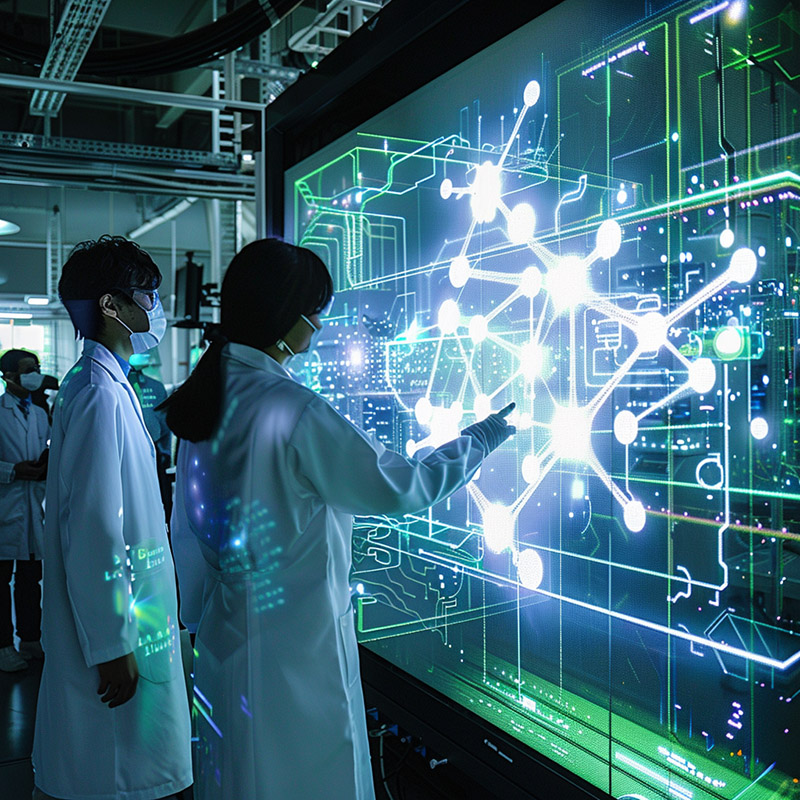
New Academic Journal on Artificial Intelligence Launched: Mississippi State University introduced an open-access academic journal, AI Letters, focusing on rapid sharing of advancements in AI. It aims to cover a broad range of AI topics, offering concise, impactful discussions and facilitating quicker peer review processes.
AI Outperforms Humans in Creative Potential Tests: A study found that ChatGPT-4 outperformed humans in standardized tests measuring divergent thinking, suggesting higher creative potential in AI. This raises questions about AI's role in creative processes and its potential to inspire human creativity.
AI-Enabled Atomic Robotic Probe Advances Quantum Material Manufacturing: The National University of Singapore developed an atomic robotic probe integrating AI and scanning probe microscopy to fabricate quantum materials with precise control. This innovation could revolutionize quantum computing and high-speed electronic devices by enabling more efficient material production at the atomic level.
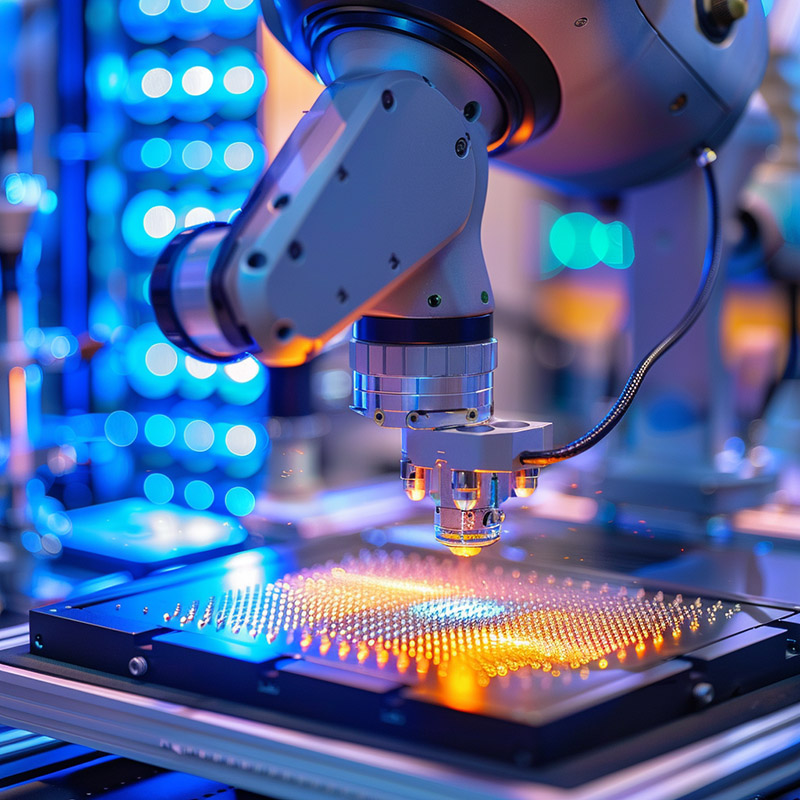
Artificial Intelligence Reveals Prostate Cancer Diversity: AI has helped scientists discover a new aggressive form of prostate cancer, leading to a potential revolution in diagnosis and treatment. This finding, funded by Cancer Research UK and involving an international team, identifies two subtypes of prostate cancer, termed evotypes, which could lead to personalized treatments based on genetic testing.
Digital Science Catalyst Grant Winners Announced: Digital Science awarded two Catalyst Grants of £25,000 each to support AI-based innovations in research. The winners will use this funding to develop ideas aimed at reducing the burden on researchers applying for funding and predicting research impact, potentially advancing global research significantly.
AI Predicting Household Energy Costs: Using AI and Google Street View images, researchers developed a model to predict household energy expenses in Chicago, aiding in addressing energy burdens for low-income families.

AI in Preventing Type II Diabetes: An AI model was developed to predict which prediabetic patients would benefit most from preventive treatments, potentially saving lives and reducing healthcare costs.
AI Technology for Rare Diseases: An international team developed AI technology to improve the treatment of rare diseases, including identifying the causes of myasthenic-congenital syndromes, showcasing AI's potential in addressing challenges in rare disease research.
Dimensions Research GPT: Digital Science launched Dimensions Research GPT to provide evidence-based research insights on the ChatGPT platform, enhancing research discovery through AI-generated answers informed by an extensive database.
AI in Cardiovascular Care: The American Heart Association emphasized the urgent need to develop best practices for AI in cardiovascular care to improve patient outcomes, highlighting the potential and current limitations of AI technologies in this field.
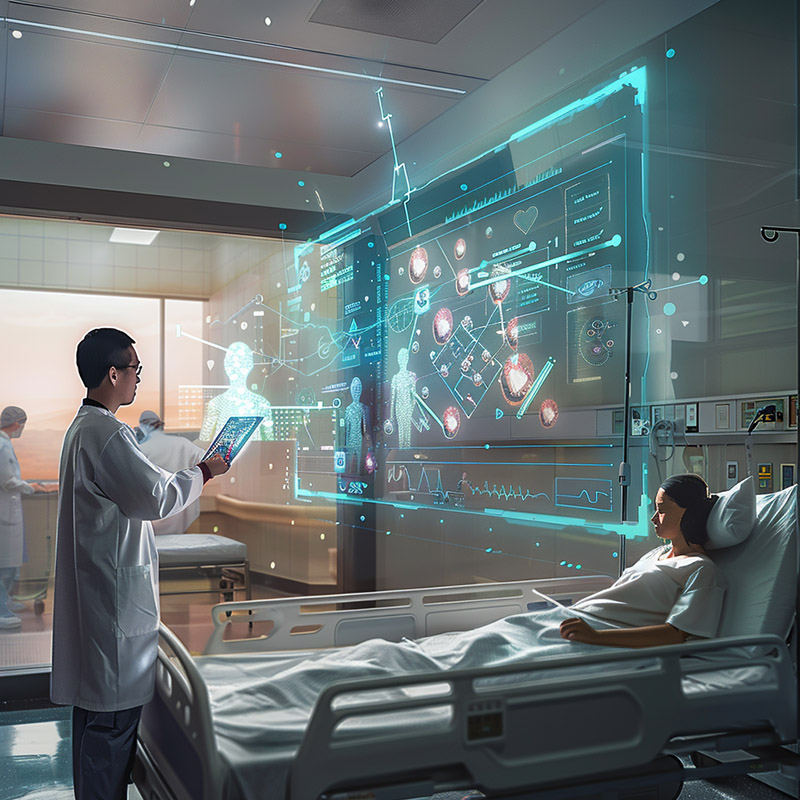
Geometry in AI Safety: Researchers have developed a novel approach using geometric principles to identify and mitigate potential safety hazards in AI-driven systems, particularly in autonomous vehicles and robotics. This method focuses on creating safety nets that can predict and prevent dangerous situations before they occur, aiming to enhance overall safety in increasingly automated environments.
Pacific Humpback Whales and Climate Change: A study utilizing AI to analyze public photographs has shed light on the impact of climate change on Pacific humpback whale populations. The findings suggest that the recent marine heatwave has disrupted their recovery, highlighting the critical need for conservation efforts to address the challenges posed by global warming on marine life.
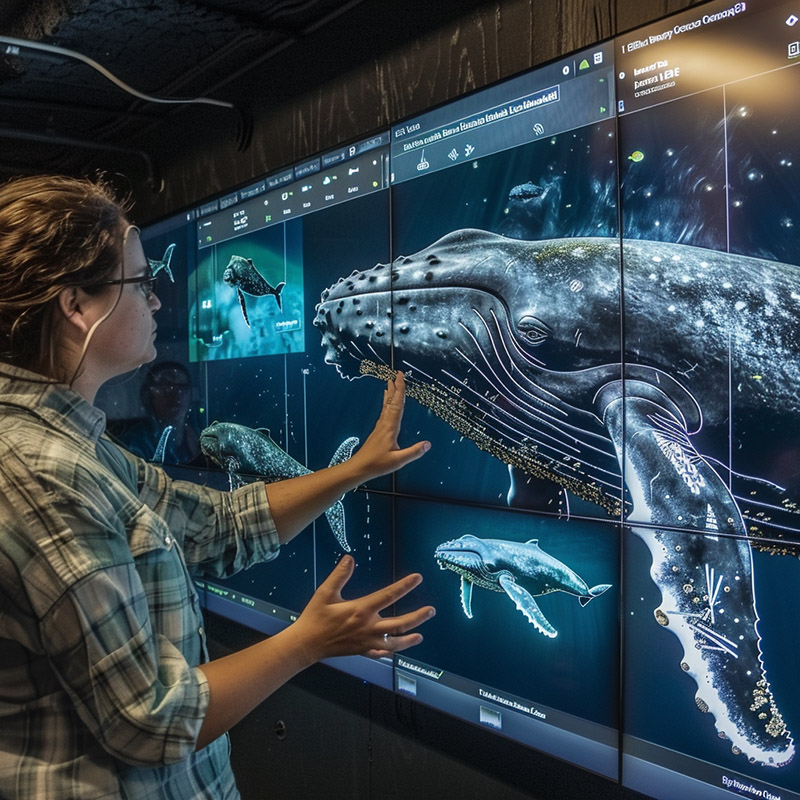
AI in Infection Control: The application of AI in hospital settings is being explored to enhance infection control measures, including optimizing the use of personal protective equipment and maintaining cleanliness. By leveraging AI algorithms, hospitals can improve their protocols to prevent the spread of infections, ensuring a safer environment for patients and healthcare workers.
AI and Infectious Disease Outbreaks: AI technology is revolutionizing the way healthcare systems respond to infectious disease outbreaks by providing faster and more accurate detection and management solutions. This advancement helps in reducing response times, enabling healthcare professionals to act swiftly in controlling the spread of diseases.
AI for Detecting Depression: Researchers have developed a smartphone application that employs AI to detect early signs of depression through facial cues and speech patterns. This tool aims to facilitate early intervention and provide users with timely access to mental health support, potentially revolutionizing the approach to mental health care.
AI in Robotic Warehouses: A breakthrough AI model designed for robotic warehouses aims to optimize operations by efficiently managing robot traffic and streamlining the picking and packing process. This innovation not only enhances productivity but also reduces the likelihood of errors, contributing to smoother logistics and supply chain management.
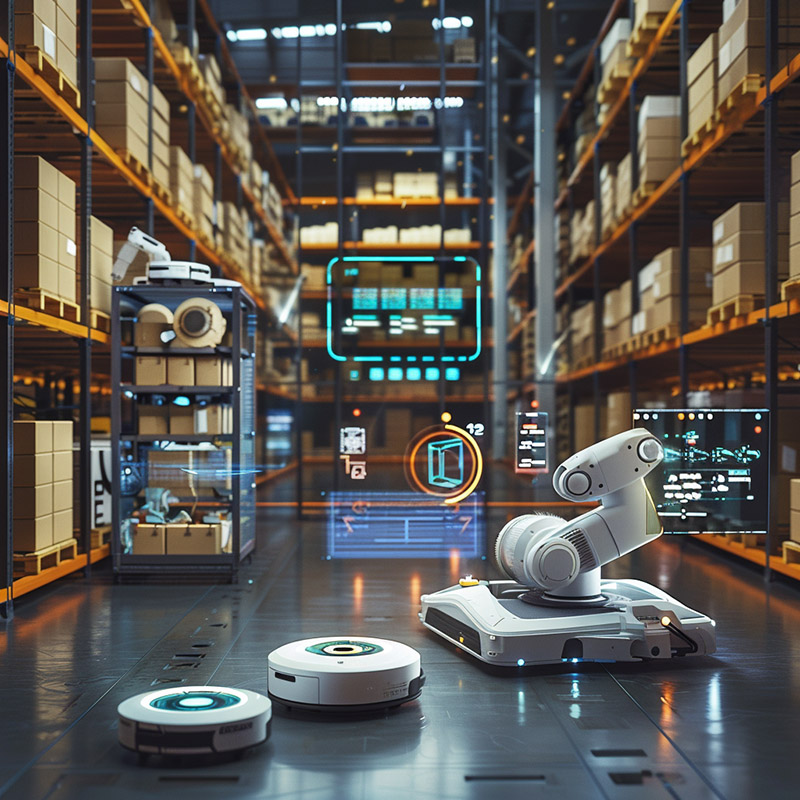
Environmental Impacts of AI Tools in Radiology: The growing use of AI in radiology raises concerns about its environmental impact, particularly regarding energy consumption and electronic waste. Researchers are calling for sustainable practices in the development and implementation of AI tools in medical imaging, emphasizing the need for a balance between technological advancement and environmental responsibility.
ChatGPT and Exercise Recommendations: An investigation into the accuracy and completeness of exercise recommendations provided by ChatGPT has revealed significant gaps in the information it offers. The study underscores the importance of human expertise in health and fitness guidance, suggesting that AI-generated advice should be supplemented with professional input.
AI-driven Lab for Catalysis Research: The introduction of an autonomous laboratory powered by AI marks a significant leap forward in catalysis research. This facility accelerates the discovery and development of new catalysts, paving the way for more efficient and sustainable chemical manufacturing processes.
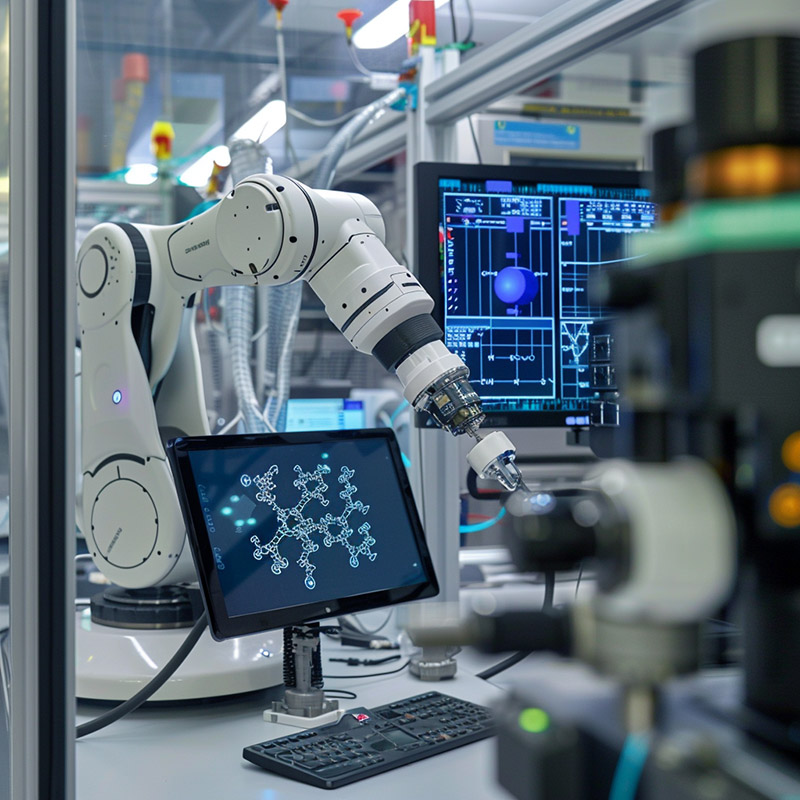
AI Bots in Political Discourse: A recent study has found that many social media users have difficulty distinguishing between comments made by human users and those generated by AI bots in political discussions. This challenge underscores the complexity of identifying sources of misinformation and highlights the need for increased awareness and tools to detect AI-generated content in online discourse.
Five Grand Challenges at the Interface of Engineering and Medicine: Five pivotal areas exist where engineering and medicine intersect, poised to revolutionize healthcare: creating new disciplines that merge physical and life sciences, developing smart devices for real-time health monitoring, advancing technologies to understand brain function, harnessing the immune system for novel treatments, and pioneering genomic engineering for personalized medicine.
Demystifying Black Box Audio Models: Efforts are underway to make AI audio models, which often operate as "black boxes," more interpretable. By employing explainable AI (XAI) methods, researchers aim to bridge the gap in understanding how these models process and interpret audio signals, thereby making them more transparent and trustworthy.
AI-powered Surgical Training Program: An innovative AI tool enhances surgical training by providing real-time feedback and personalized instruction. This tool aims to significantly improve the efficiency and effectiveness of surgical education, preparing trainees for complex procedures with a higher degree of skill and confidence.
Estonian AI Safety Engineering Center: Estonia has undertaken an ambitious initiative to establish the first European center dedicated to AI safety engineering. This center aims to address critical aspects of AI deployment, including ensuring the correctness, security, and ethical considerations of AI systems, positioning Estonia as a leader in AI safety.
Road Features that Predict Crashes: Greek engineers used machine learning to pinpoint road design flaws, damaged pavement, and missing signs/markings as major crash factors. This knowledge could help design safer roads and train AI to monitor road conditions in real-time.
Nonstop Chatbots: MIT researchers found a simple fix that prevents AI chatbots from deteriorating during long conversations. This could enable AI that stays responsive and helpful for much longer without needing resets.
Empathy in Education Tech: Study confirms benefits of "empathic chatbots" in education – they boost student motivation and performance. Researchers highlight design principles for such AI tutors and call for their development to be ethical and inclusive.
Machine Learning in Metabolism Research: A new study demonstrates the potential of machine learning and statistics to solve a persistent problem in metabolomics: large variations in data gathered at different research sites. This variability, explains Daniel Raftery of the University of Washington School of Medicine, can stem from differences in subjects or sample handling techniques. Raftery and colleagues successfully used machine learning to reduce data variation from different sites by over 95%. Importantly, this was achieved without losing important distinctions, like those between men and women. This paves the way for reliable comparisons and analyses across multiple studies. Metabolomics, the study of metabolites (small chemicals produced by metabolic processes), offers insights into cellular function and disease. Raftery believes this machine-learning approach will reduce unwanted noise in the data, boosting metabolomics' potential to reveal signs of disease and enhance our understanding of normal metabolism.
Mount Sinai Awarded NIH Grant for Sleep Apnea Research: Mount Sinai researchers have been awarded a five-year, $4.1 million NIH grant to develop an AI-powered model that predicts adverse outcomes of obstructive sleep apnea. The model examines sleep functions impaired by apnea—breathing, oxygen levels, and sleep stages—and combines these categories into a probability score that predicts the risk of short- and long-term outcomes. Preliminary data suggests the model could predict sleepiness due to apnea with 87% accuracy and cardiovascular mortality with 81% accuracy, outperforming the current diagnostic tool.
Risks of Artificial Intelligence: An extensive review of AI scientific literature by Dr. Roman V. Yampolskiy has found no evidence that AI can be safely controlled. In his upcoming book, "AI: Unexplainable, Unpredictable, Uncontrollable," Yampolskiy argues that the development of AI superintelligence is an almost guaranteed event with the potential to cause an existential catastrophe. He suggests that AI cannot explain its decisions, and humans may not be able to understand the explanations given. Yampolskiy calls for increased efforts and funding for AI safety and security research to minimize risks, even if 100% safe AI may not be achievable.
AI-driven film project explores space exploration from diverse perspectives: "Doppelgängers3," a feature film premiering at SXSW 2024, integrates insights from intergenerational trauma, neuroscience, quantum physics, and space exploration to challenge conventional narratives of space colonization. The project, supported by the SETI Institute, aims to spark conversations about inclusivity, ethical considerations, and transnational thinking in the space science community.
AI system improves stroke care and reduces recurrent strokes: An artificial intelligence (AI) system that guides treatment decisions for ischemic stroke patients led to improved stroke care quality and fewer recurrent strokes, heart attacks, and vascular deaths among survivors three months after a stroke, according to a study conducted in hospitals in China. The AI system integrated brain imaging scans with clinical knowledge to aid in diagnosis, classification, and treatment recommendations.
Notre Dame joins consortium to advance safe and trustworthy AI: The University of Notre Dame has joined the Artificial Intelligence Safety Institute Consortium (AISIC), a group of over 200 leading AI stakeholders working to establish advanced measurement techniques to identify risks associated with current AI systems and develop safer, more trustworthy AI. The consortium, formed by the National Institute of Standards and Technology, aims to confront challenges and maintain America's competitive edge in AI development.
University of Warwick receives funding for "AI in the streets" project: The University of Warwick has been awarded funding for a project entitled "AI in the streets," which explores the connection between responsible AI principles and the realities of AI implementation in everyday urban environments. The project aims to make visible the impact of AI technologies like autonomous vehicles, surveillance systems, and AI-driven apps on city streets, fostering a shared understanding among stakeholders and the general public.
Predicting oxaliplatin-induced liver injury using AI and logistic regression: Researchers developed artificial neural network (ANN) and logistic regression (LR) models to predict the risk of oxaliplatin-induced liver injury (OILI) in cancer patients. The ANN model outperformed the LR model in discriminative and calibration abilities, showing potential for early screening of high-risk groups and optimizing medical decision-making to reduce adverse effects of OILI and promote drug safety.
AI model detects low blood sugar levels while driving: A machine learning model developed by researchers from LMU, University Hospital of Bern, ETH Zurich, and the University of St. Gallen can detect hypoglycemia in diabetic drivers using only driving behavior and head/gaze motion data. The model could serve as an early warning system in cars, allowing drivers to take precautions before hypoglycemic symptoms impair their ability to drive safely.
Deep learning enhances precision and efficiency in single-molecule imaging: National University of Singapore researchers demonstrated that deep learning, using convolutional neural networks (CNNs), allows for more precise observation of single-molecule dynamics with less data compared to traditional evaluation methods. The CNNs, named FCSNet and ImFCSNet, can potentially accelerate single-molecule measurements in complex systems and make the technology more accessible to a wider range of researchers.
Algorithm Predicts Antidepressant Effectiveness: A new AI algorithm using brain scans and clinical data can predict whether the antidepressant sertraline will be effective for patients with major depressive disorder within a week, significantly reducing the usual 6-8 week waiting period.
AI-Designed Medicine: Scientists at Chapman University have harnessed the power of ChatGPT to design new medicines, potentially accelerating the drug discovery process and reducing costs.
AI Framework for Image Compression: Researchers at EPFL have developed a machine learning framework that compresses image data more accurately than traditional methods, with potential applications in retinal implants and other sensory prostheses.
EU Funding for AI in Adult Education: The JGU Center for Lifelong Learning has secured EU funding for a new project, "AI in ADU," which aims to use artificial intelligence to provide personalized and adaptive learning experiences, with a focus on language learning.
AI Patent Race Heats Up: Major players like IBM, Google, and Microsoft are vying for the top spot in generative AI, driving a 16% increase in patent grants and a 31% surge in patent applications over the past five years.
Skin Tone Bias in Medical Imaging: Doctors encounter difficulties in diagnosing diseases when examining images of darker skin, highlighting the need for more inclusive AI systems in healthcare.
AI in Scientific Research: A study examines the advantages and disadvantages of using ChatGPT to write scientific research articles, finding that the tool can assist in certain aspects of writing but lacks the ability to generate complete, accurate articles independently.
Ethical Considerations for AI in Education: A new study explores the ethical considerations and challenges faced by teachers when integrating AI into the classroom, emphasizing the influence of gender and technology confidence on AI usage.
AI Safety Institute Launched: The University of Notre Dame joins a consortium to establish the Artificial Intelligence Safety Institute, aiming to develop advanced measurement techniques to identify risks associated with current AI systems and promote the development of safer and more trustworthy AI.
AI for Diabetes Early Warning: Researchers unveil an AI model that can serve as an early warning system for low blood sugar levels in diabetic patients while driving, based solely on driving behavior and head/gaze motion.
Insilico Medicine's AI expert to speak at BIO CEO & Investor Conference: Petrina Kamya, PhD, Head of AI Platforms at Insilico Medicine, will participate in a panel discussion on the current and future applications of AI in drug discovery and design at the BIO CEO & Investor Conference in New York City.
Max Planck Institute and Google expand AI research partnership: The Max Planck Institute for Informatics and Google are deepening their strategic research partnership with the establishment of a new research area focused on vision and language models (VLMs) at the Saarbrücken Research Center for Visual Computing, Interaction and Artificial Intelligence (VIA).
MSU receives $5M to make voice AI accessible for people who stutter: Michigan State University, Western Michigan University, and the nonprofit Friends: The National Association of Young People Who Stutter have advanced to Phase 2 of the NSF Convergence Accelerator program, receiving a $5 million award to develop accessible and fair voice-activated AI for people who stutter.
MU launches Digital Agriculture Research and Extension Center: The University of Missouri has created the Digital Agriculture Research and Extension Center (DAREC). The center's mission is to boost agriculture through the use of digital technologies and artificial intelligence (AI). DAREC plans to train farmers in the use of these technologies while conducting research at a demonstration site called the MU Digital Farm. This initiative is important because digital agriculture has the potential to make farms more efficient and sustainable. For instance, AI could be used to help farmers make data-driven decisions about when, where, and how to use resources like nutrients and water. Agriculture is a significant part of Missouri's economy, and DAREC's work could have far-reaching benefits. The center's partnerships among the university, MU Extension, and the USDA are designed to help ensure the widespread adoption of new farming technologies.
Mount Sinai receives $1.95M gift for AI in Human Health Fellowship Program: The Windreich Department of Artificial Intelligence and Human Health at Mount Sinai's Icahn School of Medicine has received a $1.95 million gift from Schmidt Sciences to establish The Eric and Wendy Schmidt AI in Human Health Fellowship Program, supporting five fellows over three years to advance medical research using AI and machine learning.
Neural Network formed with Active Microparticles
EPFL researchers have developed an algorithm to train physical neural networks as accurately as digital ones.
Saving Elephants with Drones and AI
Samsung AI upgrades announced.
NYU scientists develop a self-explaining neural network for genomics, shedding light on AI prediction mechanisms.
Open Source AI security tools from Protect AI.
AI-powered on-demand manufacturing company receives $32M investment.
AI improves soil health - creating tools and systems for analyzing, monitoring, and improving agricultural soil health.
Artificial life forms - hybrid nanomachines, vaccines, and artificial life - may treat difficult diseases and revolutionize healthcare.
AI earthquake prediction advances to 70% a week out.
AI improves social conversations, promoting civil dialogue, find BYU and Duke University researchers.
AI reads chest x-rays as well as radiologists, suggesting clinical workflow integration.
AI-assisted microscopy selectively targets and examines specific features within samples ecological modeling.
AI bird conservation - ecological modeling.
AI shape geometry - exploring the building blocks of shapes.
Canva Magic Studio offers an AI-powered design platform for a wide range of users.
Google DeepMind introduces the Open X-Embodiment Dataset and RT-X Model to support universal robotic learning.
AI creativity in designing new robots, unburdened by conventional human design expectations.
Analogical prompting of large language models draws inspiration from human cognition, particularly analogical reasoning, where we use prior knowledge to tackle new challenges.
AnyMAL multi-modal language model can interpret various input modalities -- text, image, video, audio, and motion sensor data -- and generate textual responses.
Webdesk AI News | Webdesk AI Glossary